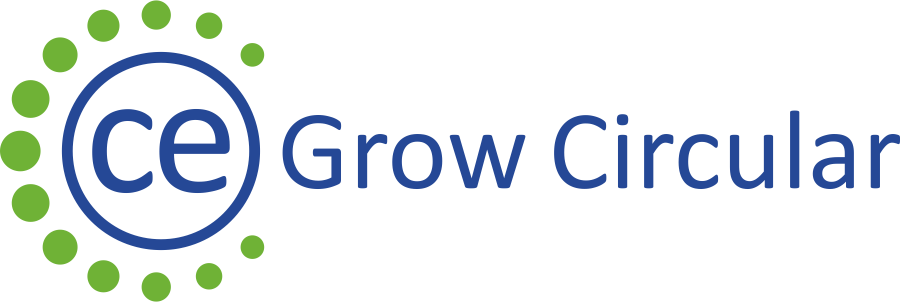After analyses of existing monitoring frameworks, stakeholders from the Urban Agenda Partnership assessed the long list of indicators from the existing models according to the following criteria:
- „Core/additional indicator (2 = core; 1 = additional, 0 = not relevant) Do you think the indicator is relevant for measuring CE in a city?
- Data availability and quality at city level (from 2 = high availability,to 0= no/scarse availability): Is information available (or could be available) at the city level?
- Influence of local authority on the indicator (from 2= high influence, to 0= no/very limited influence): To what extent can a local authority influence the activity measured by a specific indicator?“
The results of the mapping is a list of suggested indicators listed in the table below:
| Thematic area | Theme 1: Production and consumption | |||
| Category | Indicators | Indicator type | Links to conceptual elements | Comments |
| Self-sufficiency for raw materials | Input of virgin materials per capita | Outcome | Production and distribution | Unit: Tons per capita |
| Data: Very low / no data available | ||||
| Water used for production processes and domestic water consumption | Outcome | Production and distribution | Unit: Cubic meters | |
| Data: Low availability | ||||
| Organisations that have implemented an environmental management system (EMAS, Ökoprofit, QuB, ISO 14001 certification) | Outcome | Production and distribution / Eco-design | Unit: Number or share | |
| Data: Medium availability | ||||
| Green Public procurement | Share of major procurement that includes environmental requirements | Process | Consumption and Stock | Unit: %Data: Medium availability |
| CE/waste prevention criteria developed in guidelines for procurement | Process | Consumption and Stock | Unit: Qualitative (Yes/No) | |
| Data: High availability | ||||
| Waste generation | Annual amount of solid waste (domestic and commercial) | Context | Waste | Unit: Tonnes of waste (per capita) |
| Data: High availability | ||||
| All waste for all industry sectors | Outcome | Waste | Unit: Tonnes of waste | |
| Data: Medium availability | ||||
| Waste Electrical & Electronic Equipment (WEEE) Generation | Outcome | Waste | Unit: Tonnes of waste collected | |
| Data: Medium availability | ||||
| Hazardous Waste Generation per capita (tonnes) | Outcome | Waste | Unit: Tonnes of waste | |
| Data: Medium availability | ||||
| Level of public awareness for CE and waste prevention | Outcome | Waste / Consumption and Stock | Unit: % of people | |
| Data: Low availability (requires surveys) | ||||
| Communication measures (campaign, provision of information, events for the public/companies) on circular transformations and waste prevention | Process | Waste / Consumption and Stock | Unit: Number | |
| Data: Medium availability | ||||
| Food waste generation | Generation of food waste | Outcome | Waste | Unit: total food waste generated (for households), or total food waste collected by separate collection, or share of food waste in residual waste |
| Data: Very low / no data available | ||||
| Initiatives/awareness campaigns at city level for the areduction of food wste generation | Process | Waste | Unit: Number | |
| Data: Medium availability | ||||
| Thematic area | Theme 2: Waste management | |||
| Category | Indicators | Indicator type | Comments | |
| Overall recycling rates | Recycling rate (% of the city’s solid waste that is recycled) | Context | Recycling | Unit: % (of weight); If data allow it: % of waste upcycled and/or % of waste downcycled |
| Data: High availability | ||||
| Recycling rates for specific waste streams | Breakdown of waste streams by different treatment options | Outcome | Recycling | Unit: % (of weight)E.g.: % of construction and demolition mineral waste recycled; kg per capita recycled biowaste; tonnes of hazardous waste treated |
| Data: Medium availability | ||||
| Waste electrical and electronic equipment (WEEE) by waste management operations | Outcome | Recycling (recovery, reuse) | Unit: Recovery(tonne/ percentage), Recycling and reuse (tonne/ percentage), Reuse (tonne/ percentage) | |
| Data: Medium availability –available from Eurostat, but notat city level | ||||
| Diversion of landfill of biodegradable waste | Outcome | Landfill minimisation | Unit: Tonnes of waste | |
| Data: Low availability | ||||
| Availability of a strategy for waste management | Process | Recycling | Unit: Qualitative (Y/N) | |
| Data: Medium availability | ||||
| Thematic area | Theme 3: Secondary raw materials | |||
| Category | Indicators | Indicator type | Comments | |
| Contribution of recycled materials to raw materials demand | Contribution of recycled materials to raw materials demand - End-of-life recycling input rates | Context | Materials | Unit: % |
| Data: Low availability | ||||
| Circular material use rate in local industrial/ economic processes | Outcome | Materials | Unit: % of total material use | |
| Data: Very low / no data | ||||
| Activities performed by cities that encourage the implementation of ecodesign measures | Process | Eco-design | Unit: Number of measures (e.g. promoting extended product lifetime, ability to re-use components or recycle materials from products at end-of-life, use of re-used components and/or recycled materials in products) | |
| Data: Medium availability | ||||
| Organisations that are implementing LCA schemes, EPR, Eco-label etc.. | Outcome | Production and distribution / Eco-design | Unit: Number or share | |
| Data: Medium availability | ||||
| Thematic area | Theme 4: Competitiveness and innovation | |||
| Category | Indicators | Indicator type | Comments | |
| Patents | Patents related to recycling and secondary raw materials | Context | Materials | Unit: Number |
| Data: N/A | ||||
| Private investments, jobs and gross value added in CE business | Direct jobs in CE (identify by 5-digit SIC-code) | Context | All sectors | Unit: Number / FTEs |
| Data: Medium availability | ||||
| Number of CE businesses offered business support | Process | All sectors | Unit: Number | |
| Data: High availability | ||||
| Budget amount allocated to calls for projects on CE | Process | All sectors | Unit: Number | |
| Data: High availability | ||||
| Number of pilot projects on CE | Process | All sectors | Unit: Number | |
| Data: High availability | ||||
| Number of children and/or students trained in CE aspects and/or occupations | Process | All sectors | Unit: Number of children (school education) and/or students (higher education) | |
| Data: Medium availability | ||||
| Thematic area | Theme: Overarching indicators | |||
| Category | Indicators | Indicator type | Comments | |
| Greenhouse gases | Context | Emissions | Unit: thousand tonnes (E.g. in industrial processes and product use, waste management) | |
| Data: Low availability | ||||
| Availability of a CE strategy at city level | Process | All sectors | Unit: Qualitative (Yes/No) | |
| Data: High availability |



